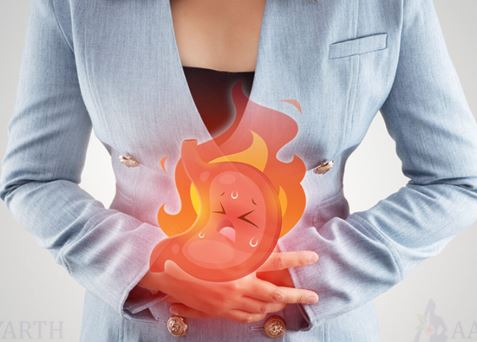Ayurvedic management of Amalpitta - A Case Report
DOI:
https://doi.org/10.21760/jaims.9.8.45Keywords:
Amlapitta, hyperacidity, acidityAbstract
Amlapitta is one of the most prevalent diseases in today's culture. It can be found in people of diverse ages, socioeconomic backgrounds, and communities. Amlapitta is the most common illness in the modern period. Because of indulgence in incompatible food habits and activities, Amlapitta is the most common disorder in today's fast increasing culture. Materialistic lifestyles drive people to lead hectic, stressed lives with little regard for good eating habits. Hyperacidity is a condition that occurs when the stomach produces too much acid. The defining characteristics of Amlapitta are described in classical Ayurvedic books as Avipaka (indigestion), Urodaha (chest burning), Utklesha (nausea), Aruchi (anorexia), and Tikta-Amlodgara (sour and bitter belching). A 38-year-old male patient arrived at the outpatient department complaining of burning in his chest, sour eructation, anorexia, etc. Vitals are normal at the time of the examination. Based on this, the patient was treated with Kamadudha rasa, Avipattikar churana, Hingavashtak Choorna, and Sutshekar Rasa. It was advised to the patient to follow up every fifteen days. The patient was instructed to keep to dietary and lifestyle guidelines in addition to taking medication.
Downloads
References
Clarrett D, Hachem C. Gastroesophageal reflux disease (GERD). J Missouri State Med Assoc 2018;115:214-8.
Ajay Kumar & Tina Singhal; Scientific Explanation of Mode of Action of Sutshekhar Ras in Amlapitta with special reference to Acid Peptic Disorders: A Review; nt. J. Res. Ayurveda Pharm. 9 (5), 2018
Vidya Lakshmipati Shastri.Yogratnakar. edited by Bhishagratna Brahmashankar Shastri. Amlapitta Pathyapathya.1-3.Pg.No.244.
The Ayurvedic Formulation of India, Part I. Second revised English Edition, Government of India, Bhaishjayaratnavali, Amlapittadhikara.Pg.No.106.
Sri Bhavamishra, Bhavaprakash Nighantu, Commentary by K C Chunekar, edited by G S Pandey, Choukamba Bharati Academy, Varanasi: Revised & Enlarged ed. 2010; p. 39-40.
Sri Bhavamishra, Bhavaprakash Nighantu, Commentary by K C Chunekar, edited by G S Pandey, Choukamba Bharati Academy, Varanasi: Revised & Enlarged ed. 2010; p. 166.
Purohit H. Kamadugha Rasa An Effective Ayurvedic Formulation For Amla Pitta, Tantia University Journal of Homoeopathy & Medical Science, Volume 3|Issue 3|July–Sept. 2020|
Manoj Kumar Dash et al / probable mode of action of hingvastaka churna / Int. J. Res. Ayurveda Pharm. 7(Suppl 3), Jul - Aug 2016















